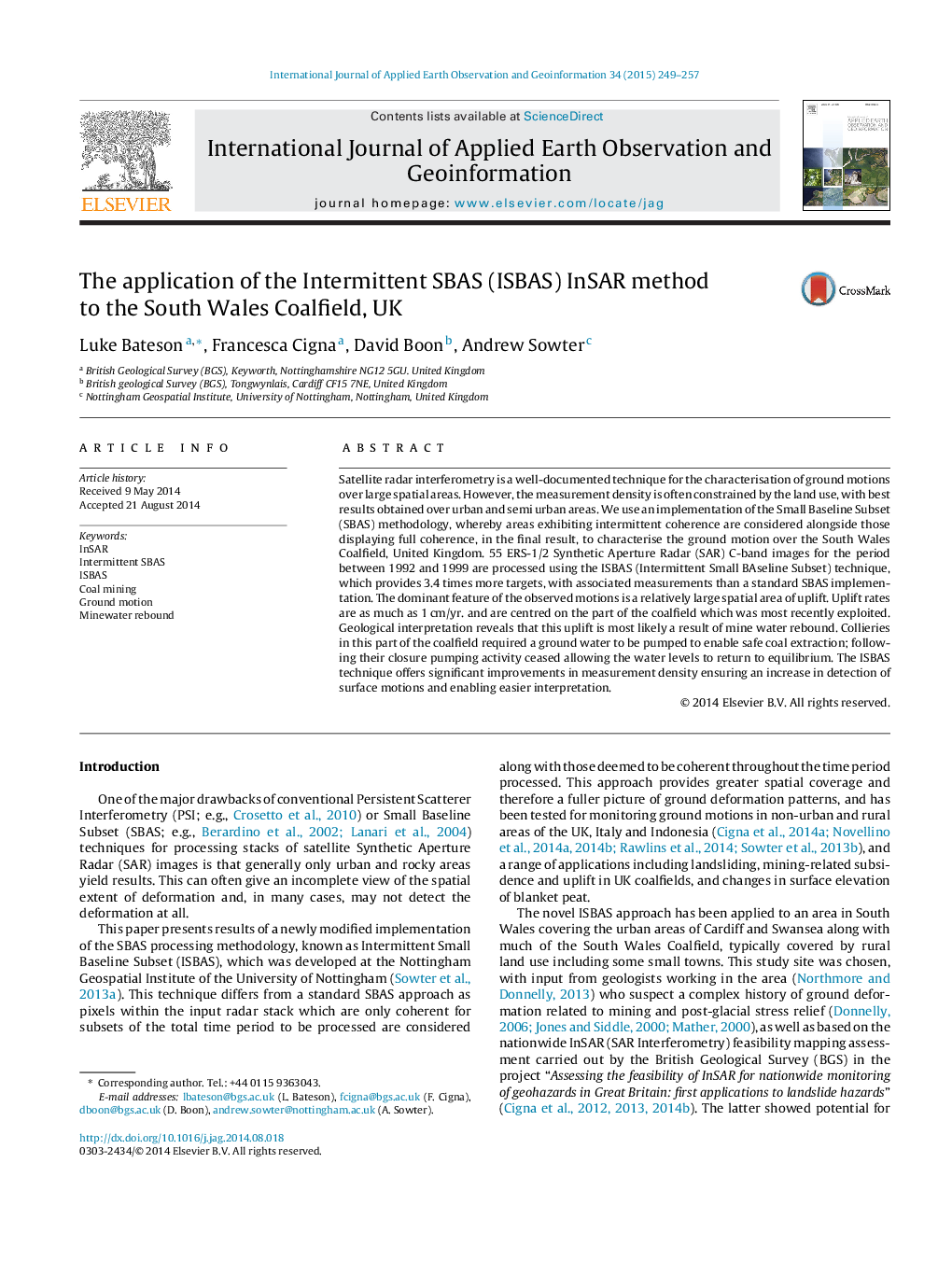| Article ID | Journal | Published Year | Pages | File Type |
|---|---|---|---|---|
| 6348761 | International Journal of Applied Earth Observation and Geoinformation | 2015 | 9 Pages |
Abstract
Satellite radar interferometry is a well-documented technique for the characterisation of ground motions over large spatial areas. However, the measurement density is often constrained by the land use, with best results obtained over urban and semi urban areas. We use an implementation of the Small Baseline Subset (SBAS) methodology, whereby areas exhibiting intermittent coherence are considered alongside those displaying full coherence, in the final result, to characterise the ground motion over the South Wales Coalfield, United Kingdom. 55 ERS-1/2 Synthetic Aperture Radar (SAR) C-band images for the period between 1992 and 1999 are processed using the ISBAS (Intermittent Small BAseline Subset) technique, which provides 3.4 times more targets, with associated measurements than a standard SBAS implementation. The dominant feature of the observed motions is a relatively large spatial area of uplift. Uplift rates are as much as 1Â cm/yr. and are centred on the part of the coalfield which was most recently exploited. Geological interpretation reveals that this uplift is most likely a result of mine water rebound. Collieries in this part of the coalfield required a ground water to be pumped to enable safe coal extraction; following their closure pumping activity ceased allowing the water levels to return to equilibrium. The ISBAS technique offers significant improvements in measurement density ensuring an increase in detection of surface motions and enabling easier interpretation.
Keywords
Related Topics
Physical Sciences and Engineering
Earth and Planetary Sciences
Computers in Earth Sciences
Authors
Luke Bateson, Francesca Cigna, David Boon, Andrew Sowter,
